A geographically diversified land, India is bestowed with rich and varied wildlife. India’s forest cover includes tropical rainforest, coniferous forest, moist deciduous forest, dry deciduous forest etc. that provide shelter to a variety of wild animals.
Each sanctuary and national park supports several species of wildlife, while at the same time, some are well known for one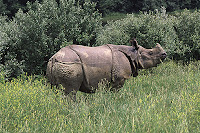 particular species. In some wildlife sanctuaries you can even see rare or endangered species. Gir Wildlife Sanctuary in Gujarat is the only surviving home of the Asiatic lion, while Kaziranga and Manas national parks in Assam have significant population of the one-horned rhino. Periyar Wildlife Sanctuary in Kerala is best known for wild elephant. Thamin deer at Keibul Lamjao National Park in Manipur and blackbuck at Velvadhar in Gujarat are the only homes of these species. Apart from these, you can see tiger, and several other variety of wildanimals in these wildlife areas.
particular species. In some wildlife sanctuaries you can even see rare or endangered species. Gir Wildlife Sanctuary in Gujarat is the only surviving home of the Asiatic lion, while Kaziranga and Manas national parks in Assam have significant population of the one-horned rhino. Periyar Wildlife Sanctuary in Kerala is best known for wild elephant. Thamin deer at Keibul Lamjao National Park in Manipur and blackbuck at Velvadhar in Gujarat are the only homes of these species. Apart from these, you can see tiger, and several other variety of wildanimals in these wildlife areas.
Accessibility : All wildlife sanctuaries and national parks are accessible by road. Jeep Safari and Elephant Safari are offered in most of the big wildlife sanctuaries.
Accommodation : For accommodation jungle resorts and hotels are available close to wildlife sanctuaries.
Best Time to Visit : October to March is the most pleasant time to visit any sanctuary and national park in the country.
Kaziranga National Park (Assam)
Manas National Park (Assam)
Periyar Wildlife Sanctuary (Kerala)
Kumarakom Bird Sanctuary (Kerala)
Wayanad Wildlife Sanctuary (Kerala)
Sunderban Tiger Reserve (West Bengal)
Bandhavgarh National Park (Madhya Pradesh)
Kanha National Park (Madhya Pradesh)
Panna National Park (Madhya Pradesh)
Gir Wildlife Sanctuary (Gujarat)
Dudhwa National Park (Uttar Pradesh)
Great Himalayan National Park (Himachal Pradesh)
In the pre-independence era there were vast wildlife areas all over India providing natural habitat to a variety of faunal and floral species. In the post-independence due to continuous poaching and other encroachment all these areas were in danger of extinction. To save the wildlife all these areas were designated as wildlife parks and sanctuaries. Now all over India there are several wildlife sanctuaries and national park whose areas extend over thousands of square kilometres. You can observe a variety of wildlife in the natural surroundings of Wildlife parks and sanctuaries.
Each sanctuary and national park supports several species of wildlife, while at the same time, some are well known for one
 particular species. In some wildlife sanctuaries you can even see rare or endangered species. Gir Wildlife Sanctuary in Gujarat is the only surviving home of the Asiatic lion, while Kaziranga and Manas national parks in Assam have significant population of the one-horned rhino. Periyar Wildlife Sanctuary in Kerala is best known for wild elephant. Thamin deer at Keibul Lamjao National Park in Manipur and blackbuck at Velvadhar in Gujarat are the only homes of these species. Apart from these, you can see tiger, and several other variety of wildanimals in these wildlife areas.
particular species. In some wildlife sanctuaries you can even see rare or endangered species. Gir Wildlife Sanctuary in Gujarat is the only surviving home of the Asiatic lion, while Kaziranga and Manas national parks in Assam have significant population of the one-horned rhino. Periyar Wildlife Sanctuary in Kerala is best known for wild elephant. Thamin deer at Keibul Lamjao National Park in Manipur and blackbuck at Velvadhar in Gujarat are the only homes of these species. Apart from these, you can see tiger, and several other variety of wildanimals in these wildlife areas.In the year 1973 Project Tiger was initiated in India that identified major ar eas inhabited by tigers. A significant increase in the tiger population was recored in areas protected by project tiger. Bandhavgarh and Kanha National Parks in Madhya Pradesh, Ranthambore and Sariska in Rajasthan, Corbett National Park in Uttarakhand and Dudhwa National Park in Uttar Pradesh are some of country’s best known tigers reserves. In addition to tigers, you can see other animal species such as lions, deers, elephants, nilgais etc.
eas inhabited by tigers. A significant increase in the tiger population was recored in areas protected by project tiger. Bandhavgarh and Kanha National Parks in Madhya Pradesh, Ranthambore and Sariska in Rajasthan, Corbett National Park in Uttarakhand and Dudhwa National Park in Uttar Pradesh are some of country’s best known tigers reserves. In addition to tigers, you can see other animal species such as lions, deers, elephants, nilgais etc.
 eas inhabited by tigers. A significant increase in the tiger population was recored in areas protected by project tiger. Bandhavgarh and Kanha National Parks in Madhya Pradesh, Ranthambore and Sariska in Rajasthan, Corbett National Park in Uttarakhand and Dudhwa National Park in Uttar Pradesh are some of country’s best known tigers reserves. In addition to tigers, you can see other animal species such as lions, deers, elephants, nilgais etc.
eas inhabited by tigers. A significant increase in the tiger population was recored in areas protected by project tiger. Bandhavgarh and Kanha National Parks in Madhya Pradesh, Ranthambore and Sariska in Rajasthan, Corbett National Park in Uttarakhand and Dudhwa National Park in Uttar Pradesh are some of country’s best known tigers reserves. In addition to tigers, you can see other animal species such as lions, deers, elephants, nilgais etc. Just 60 kms away from Agra, Bharatpur has the largest bird sanctuary in Asia. A UNESCO World Heritage Site, Bharatpur Bird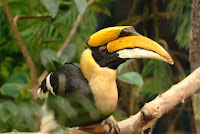 Sanctuary is also known as Keoladeo Ghana National Park. Stretched over 29 sq km of swamps and marshes, Bharatpur Bird Sanctuary has causeways which can be covered on foot or bicycle. Here you can see migratory waterbirds that include herons, ibis, pelicans, painted storks, egrets, openbilled storks and spoonbilss. Various species of ducks and geese migrate from places in Russia, that include the endangered Siberian crane.
Sanctuary is also known as Keoladeo Ghana National Park. Stretched over 29 sq km of swamps and marshes, Bharatpur Bird Sanctuary has causeways which can be covered on foot or bicycle. Here you can see migratory waterbirds that include herons, ibis, pelicans, painted storks, egrets, openbilled storks and spoonbilss. Various species of ducks and geese migrate from places in Russia, that include the endangered Siberian crane.
 Sanctuary is also known as Keoladeo Ghana National Park. Stretched over 29 sq km of swamps and marshes, Bharatpur Bird Sanctuary has causeways which can be covered on foot or bicycle. Here you can see migratory waterbirds that include herons, ibis, pelicans, painted storks, egrets, openbilled storks and spoonbilss. Various species of ducks and geese migrate from places in Russia, that include the endangered Siberian crane.
Sanctuary is also known as Keoladeo Ghana National Park. Stretched over 29 sq km of swamps and marshes, Bharatpur Bird Sanctuary has causeways which can be covered on foot or bicycle. Here you can see migratory waterbirds that include herons, ibis, pelicans, painted storks, egrets, openbilled storks and spoonbilss. Various species of ducks and geese migrate from places in Russia, that include the endangered Siberian crane. Accessibility : All wildlife sanctuaries and national parks are accessible by road. Jeep Safari and Elephant Safari are offered in most of the big wildlife sanctuaries.
Accommodation : For accommodation jungle resorts and hotels are available close to wildlife sanctuaries.
Best Time to Visit : October to March is the most pleasant time to visit any sanctuary and national park in the country.
Some of India's famous wildlife sanctuaries and national parks include :
Corbett National Park (Uttarakhand)
Ranthambore National Park (Rajasthan)
Sariska Wildlife Sanctuary (Rajasthan)
Bharatpur Bird Sanctuary (Rajashtan)
Corbett National Park (Uttarakhand)
Ranthambore National Park (Rajasthan)
Sariska Wildlife Sanctuary (Rajasthan)
Bharatpur Bird Sanctuary (Rajashtan)
Kaziranga National Park (Assam)
Manas National Park (Assam)
Periyar Wildlife Sanctuary (Kerala)
Kumarakom Bird Sanctuary (Kerala)
Wayanad Wildlife Sanctuary (Kerala)
Sunderban Tiger Reserve (West Bengal)
Bandhavgarh National Park (Madhya Pradesh)
Kanha National Park (Madhya Pradesh)
Panna National Park (Madhya Pradesh)
Gir Wildlife Sanctuary (Gujarat)
Dudhwa National Park (Uttar Pradesh)
Great Himalayan National Park (Himachal Pradesh)





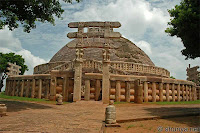

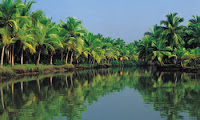
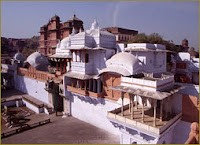
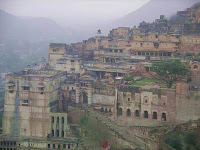


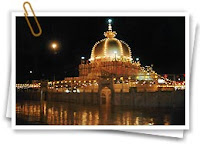
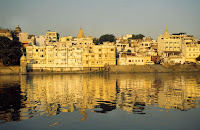
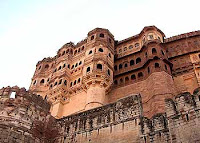 Rajasthan, second largest city after Jaipur, Jodhpur stands at the edge of the Great Indian Thar Desert. Jodhpur was founded in 1459 A.D by Rao Jodha, a chief of the Rajput clan known as the Rathores. Once the Rathore kingdom was also known as Marwar, the ‘Land of Death.’ The old city of Jodhpur is encircled by a massive 10 km long wall that was built about a century after the city was founded.
Rajasthan, second largest city after Jaipur, Jodhpur stands at the edge of the Great Indian Thar Desert. Jodhpur was founded in 1459 A.D by Rao Jodha, a chief of the Rajput clan known as the Rathores. Once the Rathore kingdom was also known as Marwar, the ‘Land of Death.’ The old city of Jodhpur is encircled by a massive 10 km long wall that was built about a century after the city was founded.